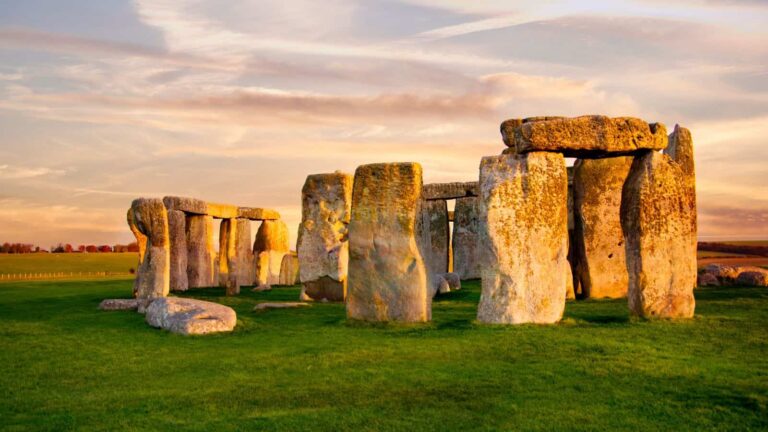The UK is home to some of the most recognisable landmarks in the world, each with its own unique story. These landmarks are not only beautiful, but they also provide a glimpse into the nation’s rich and varied history. From ancient structures to modern marvels, let’s dive into the fascinating history behind a few of Britain’s most iconic landmarks.
Stonehenge
One of the most mysterious and well-known landmarks in Britain, Stonehenge has intrigued historians and archaeologists for centuries. Located in Wiltshire, this ancient stone circle dates back around 5,000 years to the Neolithic period. Though its exact purpose remains a mystery, many believe it was used for ceremonial or religious purposes, possibly linked to the solstice.
Stonehenge’s construction is equally fascinating. The stones, some weighing up to 25 tons, were transported from as far as Wales—an incredible feat for people without modern machinery. Today, Stonehenge remains a UNESCO World Heritage site, drawing visitors from all over the world.
Tower of London
The Tower of London, standing on the banks of the River Thames, has been a symbol of British history for nearly 1,000 years. Built by William the Conqueror in 1078, it was initially a royal residence, but it soon became infamous as a prison for high-profile captives, including Queen Anne Boleyn.
Aside from its grim history as a prison, the Tower also houses the Crown Jewels, a spectacular collection that has been guarded there for centuries. Over time, it has transformed into a museum, but the Tower’s historical role in Britain’s royal and military past remains undeniable.
Big Ben (Elizabeth Tower)
Big Ben, officially known as the Elizabeth Tower, is one of the most iconic symbols of London. Often referred to as the clock tower, many people mistakenly think Big Ben refers to the tower itself, when in fact it’s the name of the giant bell inside.
Built in 1859 after the original Palace of Westminster was destroyed by fire, the Elizabeth Tower was designed by architect Augustus Pugin. Big Ben has chimed the hours through some of the most pivotal moments in British history, including during the Blitz in World War II. Today, it continues to be a beloved feature of London’s skyline.
Buckingham Palace
Buckingham Palace has served as the official London residence of the British monarch since Queen Victoria’s reign in 1837. However, its history stretches back further to 1703 when it was originally built as a private house for the Duke of Buckingham.
Over the years, it has been expanded and transformed into the grand palace we know today. With 775 rooms and a rich history of royal events, Buckingham Palace remains the heart of Britain’s monarchy and a must-see for anyone visiting London.
Edinburgh Castle
Perched on top of an extinct volcano, Edinburgh Castle is a striking fortress that dominates the city’s skyline. Its history dates back over 1,000 years, with evidence suggesting the site was used by human settlers as far back as the Iron Age.The castle has played a key role in Scotland’s history, having witnessed battles, sieges, and royal events. It has housed kings, served as a military base, and today is one of Scotland’s most popular tourist attractions. Its crown jewel is the Stone of Destiny, used in the coronation of Scottish kings.
If you enjoyed this post, please give Candid Joy a follow on MSN.

